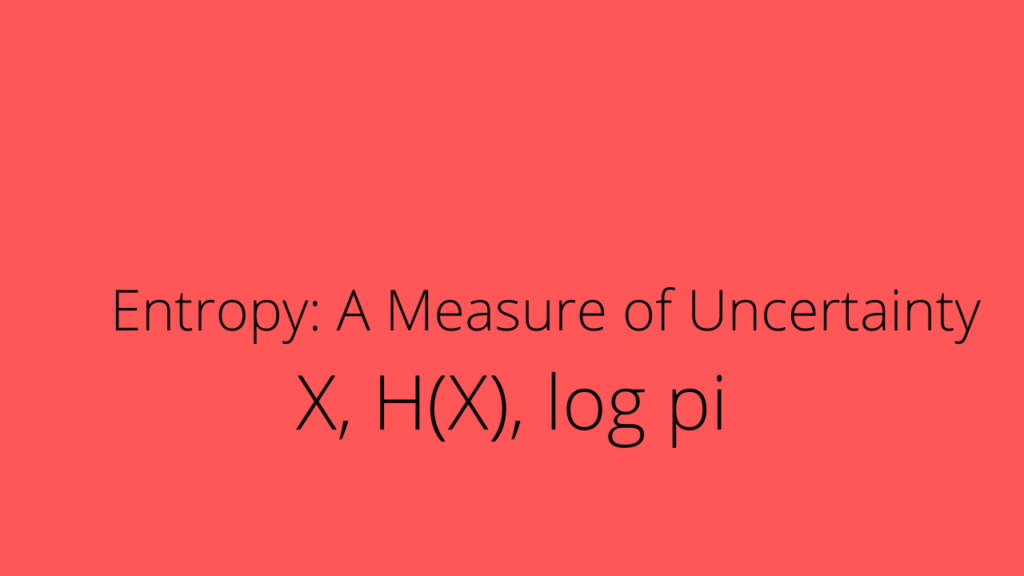Entropy of a random variable measures uncertainty inherent to possible outcomes of the variable.
H(X)= -Σin pilog2pi , where i=1, 2, 3 , 4, …..,n
Where pi are probabilities of associated events.
Take an example of tossing two coins, then you will have sample space .
S={T,H}
And X is defined as number of heads.
Then
P(X=0)=1/2 ———->Probability of getting 0 head.
P(X=0)=1/2 ———->Probability of getting 1 head.
Then
H(X)= -[1/2 log21/2+1/2 log21/2]= 1 bit
Now increase the probability of getting head from 1/2 to 2/3.
Then probability of getting tail will decrease from 1/2 to 1/3.
and
H(X)= -[2/3 log22/3+1/3 log21/3]
H(X)= -[2/3* (-0.585)+1/3 * (-1.585)]=0.91 bit(s)
You can observe that uncertainty is decreased from 1.0 bit(s) to 0.91 bits.
Again
Increase the probability of getting head from 2/3 to 3/4.
Then probability of getting tail will decrease from 1/3 to 1/4.
and
H(X)= -[3/4 log23/4+1/4 log21/4]
H(X)= -[3/4* (-0.415)+1/4 * (-2)]=0.81 bit(s)
You can observe that uncertainty is decreased from 0.91 bit(s) to 0.81 bits.
Finally, take the extreme case
Increase the probability of getting head from 3/4 to 1.
Then probability of getting tail will decrease from 1/4 to 0.
and
H(X)= -[1 log2 1+0 log20]=0
It means that there is no uncertainty, because you have you increased the probability of getting head as 1. So, always head will come i.e. 0 uncertainty.
See the video tutorial
